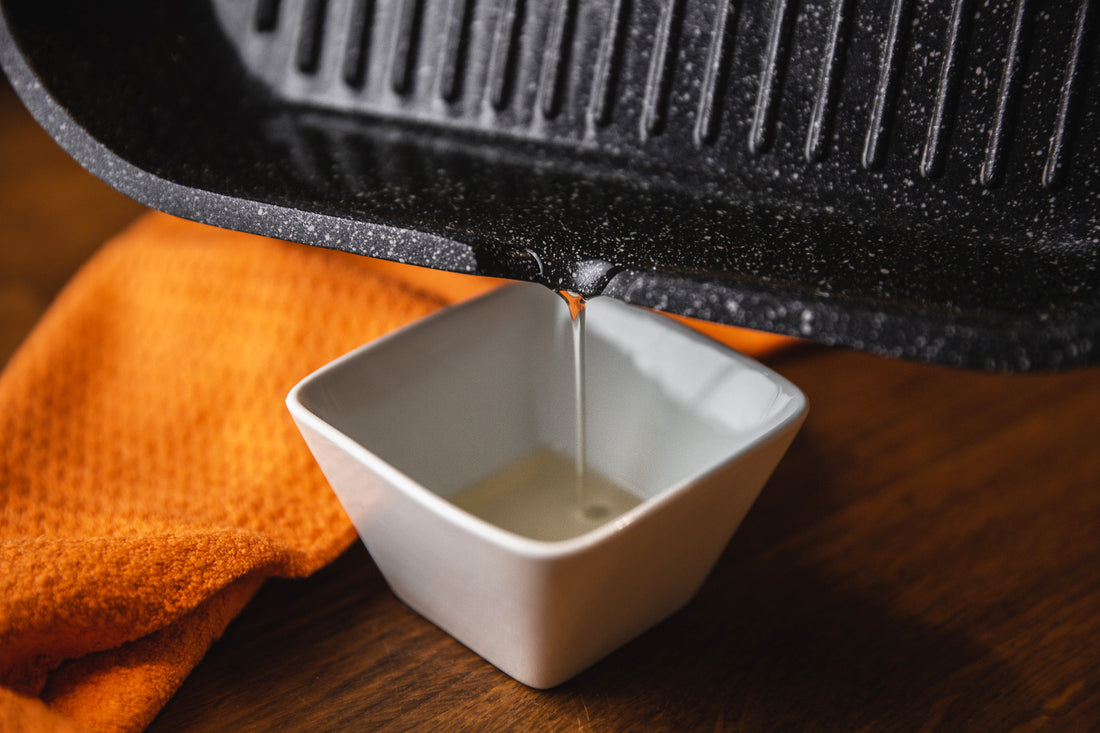The Ultimate Guide to Cleaning Non-Stick Frying Pans
Non-stick pans are a common sight in kitchens globally, making cooking a wide range of dishes easier and quicker. However, to keep their non-stick capabilities and last longer, they need proper cleaning. This guide explores the details of cleaning non-stick pans, sharing tips, techniques, and best practices to maintain them in top condition.
The pans are coated with a special material that prevents food from sticking. Over time, this coating can wear down, reducing the pan's non-stick properties. Regularly cleaning the pan is crucial to preserving its effectiveness and prolonging its lifespan. Start by wiping the pan with a soft cloth or sponge after each use. Avoid using abrasive scouring pads or steel wool, as they can damage the delicate non-stick surface. If there are stubborn food residues, fill the pan with warm water and let it soak for a few minutes before gently scrubbing.
Understanding Non-Stick Coatings
Before looking at cleaning methods, it's important to understand non-stick coatings. Most non-stick pans have a coating like polytetrafluoroethylene (PTFE), also called Teflon, or a ceramic coating. These coatings create a smooth, slippery surface that prevents food from sticking, making cooking and cleaning easier. However, despite their convenience, non-stick coatings can be damaged if not cared for properly. Harsh cleaning methods and rough materials can scratch or wear down the coating.
Daily Maintenance
Proper pan maintenance starts with daily care after each use. Follow these steps to keep your non-stick frying pan in great shape:
- Cooling Down: Let the pan cool slightly before cleaning. Putting a hot pan in cold water can warp it and damage the non-stick coating.
- Hand Washing: While some non-stick pans are dishwasher-safe, it's best to hand wash them. This prevents harsh detergents and high heat from damaging the coating. Use a soft sponge or cloth, and mild dish soap to gently clean the surface.
- Avoid Metal Tools: Don't use metal utensils when cooking, as they can scratch the non-stick coating. Opt for wooden, silicone, or plastic tools instead.
- Dry Thoroughly: Make sure the pan is completely dry before storing it. Any leftover moisture can lead to rust or mould over time.
Dealing with Stubborn Stains and Residue
Despite taking precautions, you might encounter stubborn stains or residue on your non-stick frying pan. Here are a few effective methods to tackle such issues:
- Baking Soda Paste: Create a thick paste by mixing baking soda with water. Apply the paste to the stained areas and let it sit for 15-20 minutes. Then, gently scrub the surface with a soft sponge or brush before rinsing thoroughly.
- Vinegar Solution: The acidic properties of vinegar can help break down grease and stains. Mix equal parts of water and white vinegar in the pan, bring it to a simmer, and let it cool before washing as usual.
- Lemon and Salt Scrub: Cut a lemon in half and dip the cut side into table salt. Use the lemon as a natural scrubber to tackle tough stains and residue. The acidity of the lemon combined with the abrasive salt helps lift stains without damaging the pan's coating.
- Commercial Cleaners: If natural remedies fail, there are also commercial non-abrasive cleaners designed specifically for non-stick surfaces.
Preventing Damage
Maintaining the integrity of your non-stick frying pan is crucial. By following these preventive measures, you can extend its lifespan and keep it working well:
- Proper Storage: Store your non-stick pans carefully to avoid scratches and dents. Use pan protectors or stack them with soft cloths in between to prevent metal-on-metal contact.
- Avoid High Heat: Excessive heat can damage the non-stick coating over time. Avoid using high heat settings when cooking with these pans and never preheat an empty pan, as this can lead to overheating.
- Use Cooking Oils Sparingly: While non-stick pans require less oil, using too much can create a stubborn residue. Use oils and fats sparingly or consider using cooking sprays for a lighter application.
- Regular Inspection: Regularly check your non-stick frying pan for signs of wear, such as flaking or peeling coating. If you notice any damage, it may be time to replace the pan.
When to Replace Your Non-Stick Pan
Despite proper care and maintenance, non-stick frying pans eventually wear out over time. Here are some signs that indicate it's time to replace your pan:
- Visible Damage: If you notice significant scratches, chips, or flaking on the non-stick coating, it's best to replace the pan to avoid potentially ingesting Teflon or ceramic particles, which could pose health risks.
- Loss of Non-Stick Properties: Over time, the non-stick coating may lose its effectiveness, causing food to stick to the surface despite proper cooking techniques and maintenance. If your pan no longer performs as expected, it may be time for a replacement.
- Warped or Damaged Base: Warping of the pan's base can affect its heating capabilities and cooking performance. If you notice uneven heating or instability when placed on a flat surface, it's advisable to invest in a new pan.
- Safety Concerns: If you have any concerns about the safety of your non-stick frying pan, especially regarding potential chemical exposure or contamination, it's best to replace the pan as a precautionary measure.
Non-stick frying pans make cooking and cleaning much easier. To keep your pan in great shape, follow some simple tips. Be gentle when cleaning - avoid abrasive materials and high heat. Do regular maintenance and replace the pan when needed. With proper care, you can enjoy using your non-stick pan for a long time.

